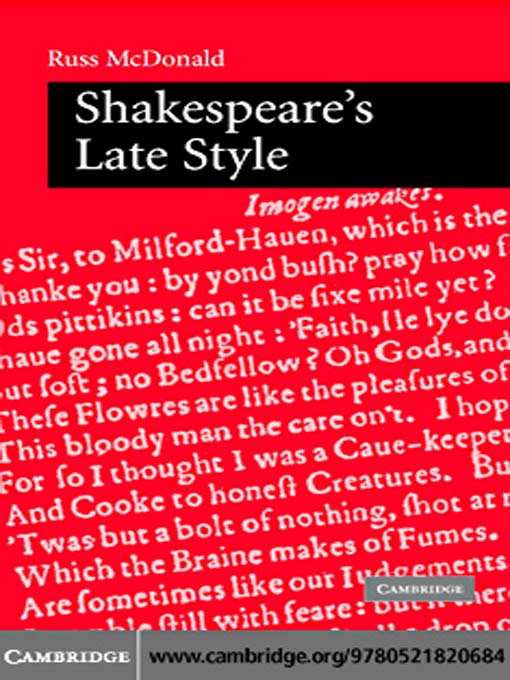When Shakespeare gave up tragedy around 1607 and turned to the new form we call romance or tragicomedy, he created a distinctive poetic idiom that often bewildered audiences and readers. The plays of this period, Pericles, Cymbeline, The Winter's Tale, The Tempest, as well as Shakespeare's part in the collaborations with John Fletcher (Henry VIII and The Two Noble Kinsmen), exhibit a challenging verse style - verbally condensed, metrically and syntactically sophisticated, both conversational and highly-wrought. In Shakespeare's Late Style, McDonald anatomizes the components of this late style, illustrating in a series of topically organized chapters the contribution of such features as ellipsis, grammatical suspension, and various forms of repetition. Resisting the sentimentality that frequently attends discussion of an artist's 'late' period, Shakespeare's Late Style shows how the poetry of the last plays reveals their creator's ambivalent attitude towards art, language, men and women, the theatre, and his own professional career.
- Available now
- Mysteries Available Now
- Thrillers Available Now
- Fantasy Available Now
- Science Fiction Available Now
- New eBook additions
- New kids additions
- New teen additions
- Most popular
- Try something different
- See all
- Available now
- Mysteries Available Now
- Thrillers Available Now
- Fantasy Available Now
- Science Fiction Available Now
- All Audiobooks
- New audiobook additions
- New kids additions
- New teen additions
- Most popular
- Try something different
- See all
- NEW! Popular Magazines
- Food & Wine
- Newly Added Magazines
- News & Politics
- Fashion
- Hobbies & Crafts
- Celebrity
- Cars & Motorcycles
- Tech & Gaming
- Sports
- Home & Garden
- See all

